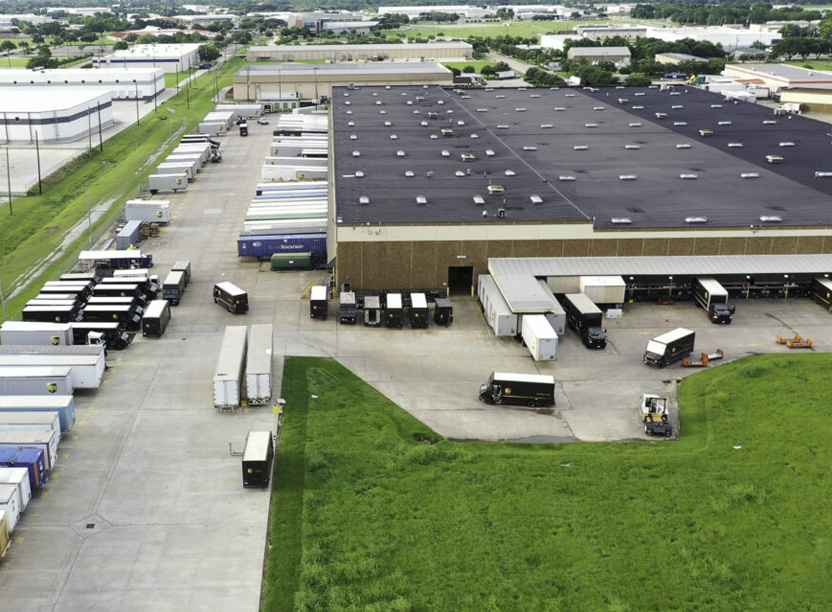International Warehousing has become a critical component of the global supply chain. The demand for international warehousing has increased due to globalization and the growth of e-commerce. The process involves storing, handling, and moving goods across international borders. The main objective of international warehousing is to provide a secure and efficient storage facility for goods during transportation across international borders. There are different types of international warehousing that cater to different needs. Bonded warehousing is one type of international warehousing that allows goods to be stored without payment of duties until they are released for distribution. Another type of international warehousing is cross-docking, which involves the transfer of goods directly from inbound to outbound transportation without the need for storage.
Furthermore, international warehousing provides several benefits, including faster and more efficient delivery of goods, reduced transit times, and lower transportation costs. Additionally, international warehousing can help businesses expand their global reach and access new markets by increasing the overall supply chain visibility. However, there are also several challenges associated with international warehousing, including language barriers, cultural differences, and compliance with local regulations. Overcoming these challenges requires effective communication, strong relationships with local partners, and a deep understanding of local regulations and customs procedures. In this blog, we will provide you with insights into the different types of international warehousing, their benefits, and how they operate. We will also explore the challenges associated with international warehousing and how to overcome them.
What is International Warehousing?
International warehousing is an integral part of the global supply chain that involves the storage and distribution of goods across international borders. It encompasses the use of specialized warehouses that cater to the unique requirements of global commerce. These warehouses are strategically situated near major ports and transportation hubs, which helps facilitate the movement of goods in and out of the warehouse. Additionally, international warehousing includes services such as customs clearance, cross-border documentation, and compliance with international regulations, which are necessary for the seamless flow of goods across borders. The use of international warehousing enables businesses to expand their reach into new markets and streamline their operations in the global marketplace.
Benefits of International Warehousing
There are several benefits associated with international warehousing. Some of the most common benefits of international warehousing are as follows:
Reduced Costs
International warehousing helps to reduce costs associated with inventory management, transportation, and customs clearance. By storing goods in a centralized location, businesses can take advantage of economies of scale, negotiate better shipping rates, and reduce the need for multiple warehouses.

Improved Supply Chain Visibility
International warehousing provides businesses with greater visibility into their supply chain, allowing them to track shipments and monitor inventory levels in real-time. This helps businesses to respond quickly to changing market conditions and customer demand.
Faster Delivery Times
International warehousing helps to reduce lead times by providing a centralized location for goods. This allows businesses to respond quickly to customer orders and reduce shipping times.
Access to New Markets
International warehousing provides businesses with access to new markets by enabling them to store and distribute goods in different countries. This helps businesses to expand their customer base and increase revenue.
How International Warehousing Works?
International warehousing involves several key steps, including:
- Goods are received at the warehouse and inspected for quality and quantity.
- The goods are then labeled and inventoried using advanced warehouse management systems that track the location and status of each item.
- Customs clearance is obtained to ensure that the goods comply with local regulations and can be legally imported into the country.
- The goods are stored in a secure and climate-controlled environment to ensure their safety and integrity.
- Orders are received and fulfilled using advanced warehouse management systems that ensure accurate and timely delivery.
- Goods are shipped to their final destination using a variety of transportation modes, including air, sea, and land.
Food Warehousing
Food warehousing is a specialized form of international warehousing that is designed to meet the unique needs of the food industry. It involves the storage, handling, and distribution of perishable goods such as fresh produce, meat, and dairy products. Food warehouses are equipped with advanced climate control systems that regulate temperature and humidity levels to ensure that the goods remain fresh and safe for consumption. They also have specialized handling equipment such as pallet jacks and forklifts that are designed to minimize damage to the goods.
Warehouse as a Service (WaaS)
Warehouse as a Service (WaaS) is a cloud-based service that provides businesses with on-demand access to warehousing and fulfillment services. It allows businesses to store and distribute goods without the need for a physical warehouse. WaaS providers offer a range of services, including inventory management, order fulfillment, and shipping. They also provide advanced warehouse management systems that allow businesses to track the location and status of their goods in real-time.
RFID Warehouse Management
RFID warehouse management is a key aspect of international warehousing. RFID (Radio Frequency Identification) technology is used to track inventory and monitor the movement of goods within the warehouse. This technology makes it easier to manage inventory levels, improve accuracy, and reduce errors. RFID warehouse management involves the use of RFID tags, which are attached to products, pallets, or containers. These tags contain information about the product, such as its serial number, quantity, and expiration date. The RFID tags are read by RFID readers, which are installed throughout the warehouse. This allows warehouse managers to track the movement of goods, monitor inventory levels, and improve overall efficiency.
Furthermore, one of the main advantages of RFID warehouse management is the ability to track inventory in real-time. This means that warehouse managers can quickly locate products and monitor inventory levels, reducing the chances of stockouts and overstocking. Additionally, RFID technology can help to reduce errors, as it is more accurate than manual data entry.
Conclusion
International warehousing is a complex and multifaceted industry that plays a critical role in the global supply chain. From food warehousing to warehouse eCommerce fulfillment, the demand for international warehousing services continues to grow. As businesses continue to expand globally, international warehousing will become even more important. By partnering with a trusted international warehousing provider, businesses can take advantage of the benefits of international warehousing, such as reduced costs, improved efficiency, and increased customer satisfaction. Furthermore, technological advancements such as RFID warehouse management are helping to make international warehousing even more efficient and effective. By embracing these technologies, businesses can stay ahead of the curve and maintain a competitive edge in the global market.

Depreet Singh
Warehouse Manager




